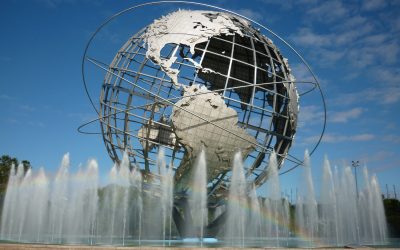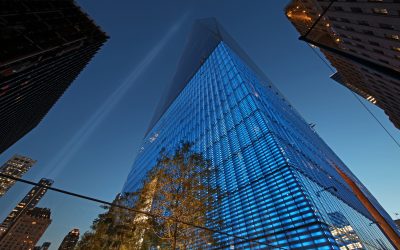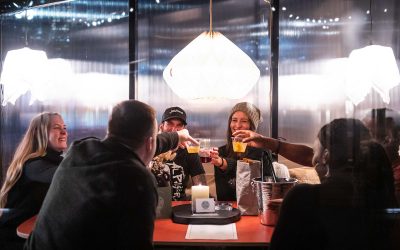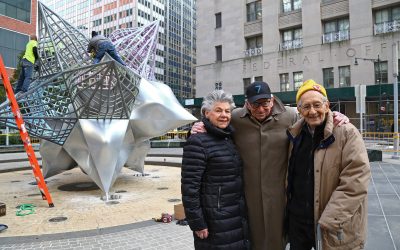 Even after a sizable British fleet had ousted the Dutch West India Company from their ownership of Manhattan, substituted James Stuart, the Duke of York (the future King James II) as proprietor of the island, and changed the island’s name from New Amsterdam to New York, the Dutch remained a force, and actively resisted assimilation into the new order. Dutch suitors were known to go as far as New Jersey and up the Hudson to Albany in search of Dutch wives, leading to a kinship network that persisted for many years. The British were rather generous in their conquest, seizing no belongings, asking no fines, but only requesting that an oath be taken to the king of England. Colonel Richard Nicolls was in charge of the conquest of New Amsterdam and he ruled there for four years, during which he achieved a reputation of being “gentle, wise and intelligent.”
Even after a sizable British fleet had ousted the Dutch West India Company from their ownership of Manhattan, substituted James Stuart, the Duke of York (the future King James II) as proprietor of the island, and changed the island’s name from New Amsterdam to New York, the Dutch remained a force, and actively resisted assimilation into the new order. Dutch suitors were known to go as far as New Jersey and up the Hudson to Albany in search of Dutch wives, leading to a kinship network that persisted for many years. The British were rather generous in their conquest, seizing no belongings, asking no fines, but only requesting that an oath be taken to the king of England. Colonel Richard Nicolls was in charge of the conquest of New Amsterdam and he ruled there for four years, during which he achieved a reputation of being “gentle, wise and intelligent.”
Standing at the foot of Broadway, facing south into Battery Park, one can see almost all of Dutch Manhattan as it was in the 1660s. The Alexander Hamilton Custom House, which today houses the National Museum of the Native American, was the site of the original fort, made of stone and built as a four-pointed star in the best European tradition. And it was on the shore! Everything to the west of that is landfill.
Nicolls’s successor was Colonel Francis Lovelace (1621-1675), who went out of his way to stimulate the economy, throwing out many of the cumbersome port rules that had restricted trade and dictated that Long Island farmers ship their goods through his docks. He also organized the first regular mail service in North America, between Boston and New York, improving the flow of news. Lovelace also established the first mercantile exchange, at the corner of what are now Pearl, Broad and Bridge streets. This time also saw the first social club in New York, where 16 members—10 Dutch and 6 Englishmen—gathered once a week to drink “punch” and talk over the business of the day. As a result of Lovelace’s careful ministrations, not to mention his quiet and private business dealings, by the 1670s the economy of New York was doing well, and Dutch names still topped the list of wealthy merchants and fur traders. Families like the Van Rensselaers, the Van Cortlandts and the Beekmans led the way, and lent their names to streets and places that still thrive.
But the Dutch weren’t done yet. The fort at the tip of Manhattan proved little help when a particularly deft fleet of Dutch ships sailed in and conquered New York yet again in 1673. But the happiness of the Dutch settlers was mitigated when the dispute was settled overseas and the Dutch found themselves back under English rule and with a new governor: Major Edmund Andros. Andros was a soldier and courtier and somewhat of an expert at ruling far-flung territories. He quickly befriended many of the same prominent Dutch settlers who had enjoyed punch with Lovelace, and streamlined much of the commerce of New York. He mandated that no goods could be shipped in or out without passing through New York and started to remake the waterfront. What is today Broad Street was once a little canal called the Heere Gracht, and in 1675 he ordered it filled in and leveled as a street, and it became the main mercantile street of the city. He also fixed up the old fort, now called Fort James, and moved messy businesses such as slaughterhouses to locations north of the wall—today’s Wall Street.
Not everyone loved Edmund Andros. New Englanders suspected that his policy of giving firearms and black powder to the Native Americans was providing their enemies with weapons, although it was meant to undercut French influence among the native tribes. But he also opened negotiations with the Five Nations of the Iroquois. Since they were the most powerful and war-like tribe in the east, they derived great benefits in the long term.
Under Andros the shipping trade of New York increased at least tenfold and the population almost doubled from the 1640s. Wealthy Dutch merchants in Manhattan began to get some competition from wealthy English merchants
such as John Darvall, Robert Livingstone and Lewis Morris. Between 10 and 20 ships a year crossed the Atlantic, bringing valuable cargoes and taking back goods to England and elsewhere. But despite the fact that New York was on a firm footing to become the greatest business center the world has ever seen, Andros had made powerful enemies, and they prompted his recall to England in 1680 to answer a welter of charges. He was acquitted, but lost his job anyway.
And what of the Lenapes, the Native American tribe who had first been contacted by white men wishing to settle at the tip of a beautiful island between the old North River and the East River? They were completely ruined by their interaction with the whites, and were all but erased from history. An old story says that the last survivor of the tribe was a man named Jim de Wilt, also known as Jim the Wild Man, who passed away in 1803, forgotten in Canarsie. Memento mori!
-by Samuel A. Southworth
Southworth is a military and espionage historian.












